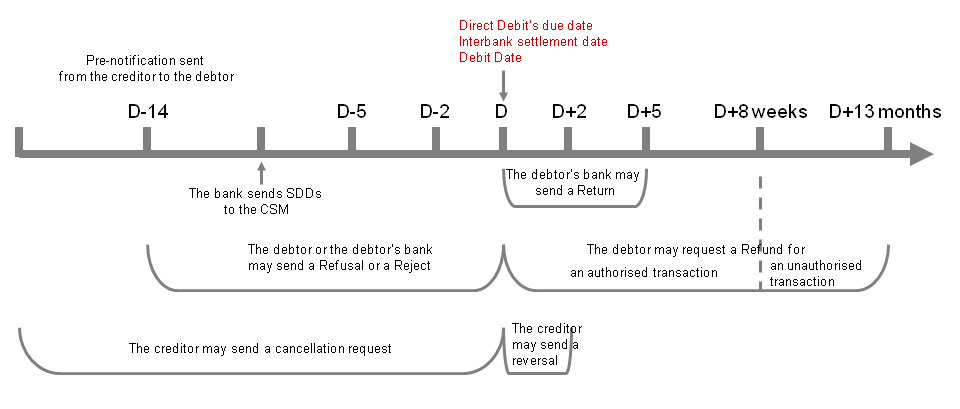Unlike the dual mandate system which is used in France, the SEPA direct debit authorization (mandate) is only stored by the creditor. The creditor is responsible for digitizing the mandate and delivering it (electronically) to the debtor’s bank for each direct debit.
The creditor, who issues the direct debit, must provide a unique reference for each mandate (UMR). The creditor is also responsible for modifying the direct debit authorization (e.g. changing the debtor’s account) or revoking it.
The creditor must transmit SEPA Direct Debits (SDD), which include the mandate data, to its bank in XML format in accordance with the ISO 20022 standard.
Mandates and direct debits must contain the new identifiers:
Bank details of the debtor: BIC/IBAN instead of bank identity (RIB) number;
SEPA Creditor Identifier (SCI) instead of national issuer number (NNE).
The diagram below shows the different rules and actions that may occur during the life cycle of a mandate (core mandate):

Picture 1: Exchange dates for SDD flows (Core)